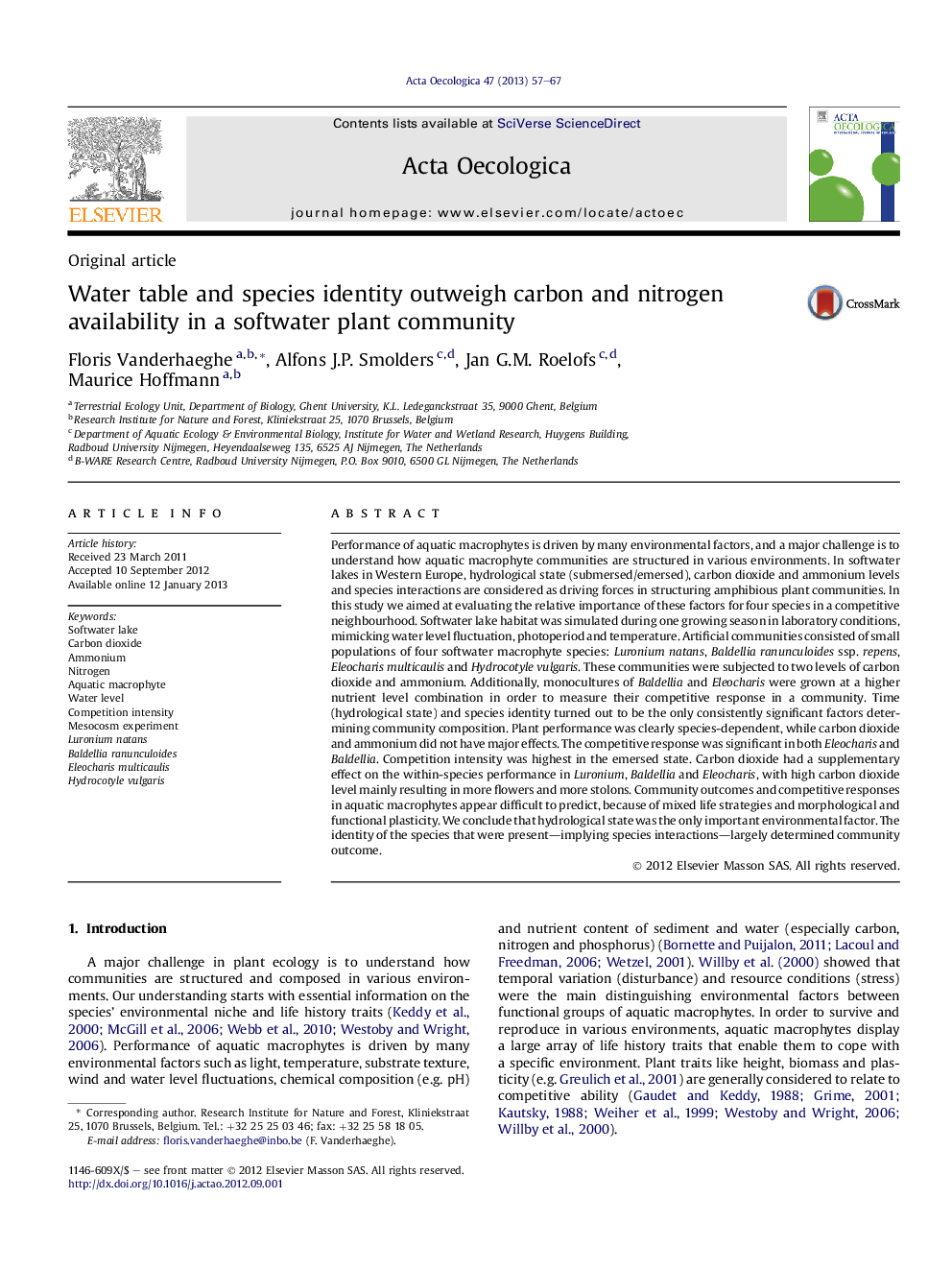| Article ID | Journal | Published Year | Pages | File Type |
|---|---|---|---|---|
| 4381107 | Acta Oecologica | 2013 | 11 Pages |
Performance of aquatic macrophytes is driven by many environmental factors, and a major challenge is to understand how aquatic macrophyte communities are structured in various environments. In softwater lakes in Western Europe, hydrological state (submersed/emersed), carbon dioxide and ammonium levels and species interactions are considered as driving forces in structuring amphibious plant communities. In this study we aimed at evaluating the relative importance of these factors for four species in a competitive neighbourhood. Softwater lake habitat was simulated during one growing season in laboratory conditions, mimicking water level fluctuation, photoperiod and temperature. Artificial communities consisted of small populations of four softwater macrophyte species: Luronium natans, Baldellia ranunculoides ssp. repens, Eleocharis multicaulis and Hydrocotyle vulgaris. These communities were subjected to two levels of carbon dioxide and ammonium. Additionally, monocultures of Baldellia and Eleocharis were grown at a higher nutrient level combination in order to measure their competitive response in a community. Time (hydrological state) and species identity turned out to be the only consistently significant factors determining community composition. Plant performance was clearly species-dependent, while carbon dioxide and ammonium did not have major effects. The competitive response was significant in both Eleocharis and Baldellia. Competition intensity was highest in the emersed state. Carbon dioxide had a supplementary effect on the within-species performance in Luronium, Baldellia and Eleocharis, with high carbon dioxide level mainly resulting in more flowers and more stolons. Community outcomes and competitive responses in aquatic macrophytes appear difficult to predict, because of mixed life strategies and morphological and functional plasticity. We conclude that hydrological state was the only important environmental factor. The identity of the species that were present—implying species interactions—largely determined community outcome.
► We conducted a mesocosm experiment simulating softwater lake habitat and plant community. ► Hydrological state was the most important factor in structuring the community. ► Carbon dioxide and ammonium did not have major effects. ► Plant performance was species-dependent. ► Competition intensity was highest in the emersed state.
